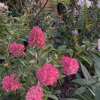Dooley
minflick
11 years ago
Related Stories

FURNITUREGuest Picks: Updated Wingback Chairs for Today
Modern lines, sophisticated colors and worldly patterns bring wingback chairs into the present
Full Story
PETS6 Ways to Help Your Dog and Landscape Play Nicely Together
Keep your prized plantings intact and your dog happy too, with this wisdom from an expert gardener and dog guardian
Full Story
LIVING ROOMSHow to Decorate a Small Living Room
Arrange your compact living room to get the comfort, seating and style you need
Full Story
EVENTSWhimsy, Color and Pattern Are Highlights of the 2015 Holiday House NYC
Step inside birthday-party-inspired playrooms and frosting-like spaces in this year's decorators' show house
Full StoryMore Discussions







luis_pr
minflickOriginal Author
Related Professionals
Danbury Landscape Architects & Landscape Designers · Marina Landscape Architects & Landscape Designers · Anderson Landscape Contractors · Pelham Landscape Contractors · Anderson Landscape Contractors · Surprise Landscape Contractors · Bethel Park Landscape Contractors · College Park Landscape Contractors · Farmington Landscape Contractors · Snoqualmie Landscape Contractors · Tewksbury Landscape Contractors · Woodburn Landscape Contractors · Agoura Siding & Exteriors · Boulder Siding & Exteriors · Kenosha Siding & Exteriorsluis_pr
minflickOriginal Author